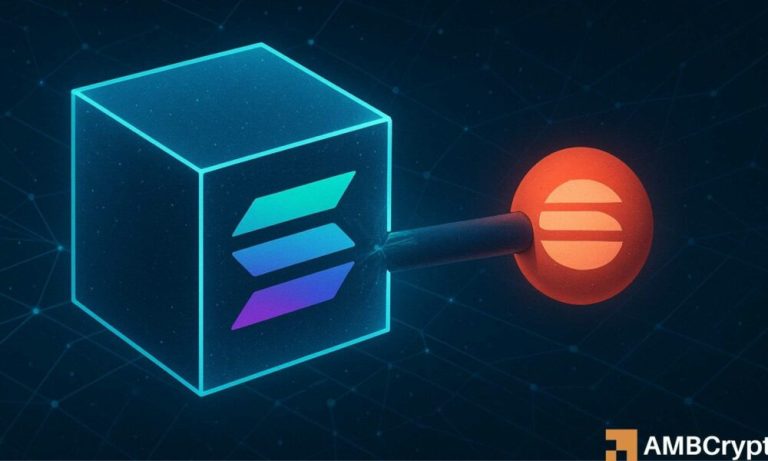
Understanding the Basics of a Balanced Diet
A balanced diet is the cornerstone of a healthy lifestyle. It ensures you get the right mix of essential nutrients to maintain energy levels, support biological processes, and prevent chronic diseases. Eating a balanced diet packed with essential nutrients is key for maintaining energy levels, supporting biological processes, and preventing chronic diseases.
Essential Nutrients to Include
To achieve a balanced diet, incorporate a variety of macronutrients and micronutrients:
- Carbohydrates: Your body’s primary energy source. Opt for whole grains, fruits, and vegetables.
- Proteins: Crucial for muscle repair and growth. Include lean meats, beans, and nuts.
- Fats: Necessary for brain health and hormone production. Choose healthy fats like avocados, olive oil, and fish.
- Vitamins and Minerals: Vital for various bodily functions. Ensure a colorful plate with plenty of fruits and vegetables.
Portion Control Tips
Balancing your portions is just as important as balancing your nutrients. Here are some tips:
- Use smaller plates to help control portion sizes.
- Fill half your plate with vegetables and fruits.
- Divide the remaining half between proteins and whole grains.
- Avoid second helpings by waiting 10-15 minutes before deciding if you’re still hungry.
Reading Food Labels Effectively
Understanding food labels can help you make healthier choices. Here’s what to look for:
- Serving Size: Check how many servings are in the package.
- Calories: Be mindful of the calorie count per serving.
- Nutrient Information: Look for high fiber, protein, and essential vitamins and minerals.
- Ingredients List: The fewer ingredients, the better. Avoid items with added sugars and unhealthy fats.
Maintaining a balanced diet and active lifestyle is important for overall well-being. Balance means enjoying the foods you love in moderation and ensuring you get the nutrients your body needs.
Meal Prepping for Success
Batch Cooking Techniques
Batch cooking is a game-changer for those with a hectic schedule. Dedicate a couple of hours on a peaceful Sunday afternoon to prepare large quantities of grains, proteins, and vegetables. This proactive approach ensures you have healthy and satisfying meals ready to fuel your productivity throughout the week. Remember, variety is the key to long-term success, so mix and match ingredients to keep things fresh.
Quick and Nutritious Recipes
When it comes to healthy eating, delicious recipes for a better you are essential. Opt for recipes that are not only nutritious but also quick to prepare. Think wholesome dinners, satisfying snacks, and guilt-free desserts. Having a plan and sticking to it can make all the difference in maintaining a balanced diet.
Storage and Reheating Tips
Invest in quality containers to keep your meals fresh and tasty. Glass containers are a great option as they are microwave-safe and do not retain odors. Label each container with the date and contents to avoid any confusion. When reheating, ensure that the food is heated evenly to maintain its nutritional value and taste.
Meal prepping is all about discipline. With a meal plan in hand, create a shopping list with no wiggle room for snacks you don’t need or processed foods. This will help you stay on track and make healthier choices throughout the week.
Smart Snacking Strategies
Healthy Snack Options
Choose nutritious, single-ingredient snacks like almonds, fresh berries, and crunchy carrot sticks. Prepare these snacks in advance by portioning them into small containers or snack bags for easy access and convenience on busy days. By having these wholesome options readily available, you can effortlessly satisfy hunger pangs while nourishing your body with natural goodness.
Portioning Snacks for Convenience
Pack snacks. You can pack fruits, vegetables, or nuts to eat during the day. Some snack ideas are apple slices with almond butter, pretzels with hummus, or trail mix. You know what goes into your snack when you make or pack it yourself. It will also help you save a substantial amount of money in the long run. Most importantly, snacking throughout the day can also prevent overeating or eating less nutrient-dense meals later.
Avoiding Common Snacking Pitfalls
Making the right snacking choices not only keeps several health issues at bay, but it also helps manage weight.
Staying hydrated all day keeps up energy levels throughout the day.
Eating Out Without Compromising Health
Eating out doesn’t have to derail your healthy eating habits. With a few smart choices, you can enjoy dining out while staying on track with your nutrition goals.
Choosing Healthier Menu Options
When scanning the menu, look for dishes that feature vegetables and lean proteins like fish or chicken. Avoid items that are fried or come with heavy sauces. Opt for grilled, baked, or steamed options instead.
Managing Portion Sizes at Restaurants
Restaurant portions can be enormous. To avoid overeating, consider splitting a dish with a friend or asking for a to-go box right away and dividing your meal. This way, you’ll have a portion to enjoy later without overindulging.
Navigating Social Eating Situations
Social gatherings can be a minefield for healthy eating. Don’t skip meals beforehand; instead, eat a small, balanced meal to avoid arriving overly hungry. Focus on enjoying the company and conversation rather than just the food.
Incorporating Physical Activity into a Busy Schedule

Balancing health on the move is not just about food; staying active is crucial for overall well-being. Even with a packed schedule, there are simple ways to get your body moving.
Quick Workouts You Can Do Anywhere
Incorporate short bursts of activity throughout the day. Take the stairs, do squats while waiting for the kettle to boil, or fit in a quick yoga session during a break. Unlocking the secrets to whole-body wellness can be as simple as these small changes.
Combining Exercise with Daily Tasks
Walking meetings, standing desks, and lunchtime strolls are all ways to integrate movement into your daily life without adding extra time. If there are options that incorporate activity, opt for those. This way, you can balance routine vs. flexibility effectively.
Staying Motivated to Move
Set realistic goals: incorporating physical activity into your daily routine doesn’t mean you have to run a marathon or spend hours at the gym. Treat exercise like an important appointment. Planning and prioritization are key strategies to fit exercise into a busy schedule.
By prioritizing these strategies, busy professionals, health enthusiasts, and working parents alike can make healthy eating a sustainable part of their lifestyle, ensuring they have the energy and wellness to tackle their busy days head-on.
Mindful Eating Practices
Take the time to truly savor your meal experience. Step away from your desk, find a peaceful spot, and engage all your senses in the dining process. Chew each bite slowly, allowing the flavors to unfold on your palate. Tune into your body’s hunger cues and eat mindfully, feeling the nourishment with each bite. Embracing this mindfulness practice can not only enhance digestion but also cultivate a deeper appreciation for the food you enjoy.
Utilizing Technology for Healthy Eating
In today’s fast-paced world, technology can be your best ally in maintaining a healthy diet. From meal planning apps to wearable tech, there are numerous tools designed to make healthy eating more accessible and enjoyable.
Best Apps for Meal Planning
Meal planning apps are a game-changer. Utilizing algorithms, these services suggest weekly meal plans tailored to your dietary preferences and health objectives. They help you save time, reduce waste, and stick to your healthy eating goals.
Online Grocery Shopping Tips
Online grocery shopping can be a lifesaver for busy individuals. Many platforms offer features like saved shopping lists and subscription services for frequently purchased items. This not only saves time but also helps you avoid impulse buys.
Using Wearable Tech to Track Nutrition
Wearable tech isn’t just for tracking steps. Many devices now offer features to monitor your nutritional intake, helping you stay on top of your diet. Incorporating these technological tools into your routine can streamline your efforts towards achieving a healthier lifestyle.
In the digital age, leveraging technology can simplify the pursuit of a healthy lifestyle. Mobile apps and online resources are at your fingertips, offering meal planning assistance, exercise tracking, and even meditation guides.
Conclusion
Maintaining a balanced diet while leading a busy lifestyle is undoubtedly challenging, but it is far from impossible. By incorporating small, manageable changes into your daily routine, such as meal prepping, choosing healthier options when dining out, and setting realistic goals, you can ensure that your nutritional needs are met without sacrificing your productivity. Remember, your health is your most valuable asset. Prioritizing it will not only boost your physical well-being but also enhance your mental health and overall productivity. So, take the first step today towards a healthier, more balanced life, and watch as the benefits unfold in every aspect of your busy schedule.
Frequently Asked Questions
What are the essential nutrients I need to include in a balanced diet?
A balanced diet should include a variety of nutrients such as carbohydrates, proteins, fats, vitamins, and minerals. These nutrients are vital for maintaining energy levels, supporting bodily functions, and overall health.
How can I practice portion control effectively?
Practicing portion control can be achieved by using smaller plates, measuring portions with cups or a food scale, and being mindful of serving sizes. Eating slowly and paying attention to hunger cues also helps in controlling portions.
What are some quick and nutritious meal ideas for busy individuals?
Some quick and nutritious meal ideas include overnight oats, salads with lean protein, stir-fried vegetables with tofu or chicken, and whole grain wraps with fresh veggies and hummus.
How can I make healthy choices when eating out?
When eating out, opt for dishes that are grilled, baked, or steamed rather than fried. Choose meals with plenty of vegetables, lean proteins, and whole grains. You can also ask for dressings and sauces on the side to control added fats and sugars.
What are some healthy snack options for on-the-go?
Healthy snack options for on-the-go include fresh fruits, nuts, yogurt, whole grain crackers, and vegetable sticks with hummus. These snacks are easy to pack and provide essential nutrients to keep you energized.
How can I stay motivated to maintain a balanced diet?
Staying motivated can be achieved by setting realistic goals, keeping track of your progress, and rewarding yourself for sticking to your plan. Additionally, involving friends or family in your journey can provide support and accountability.



